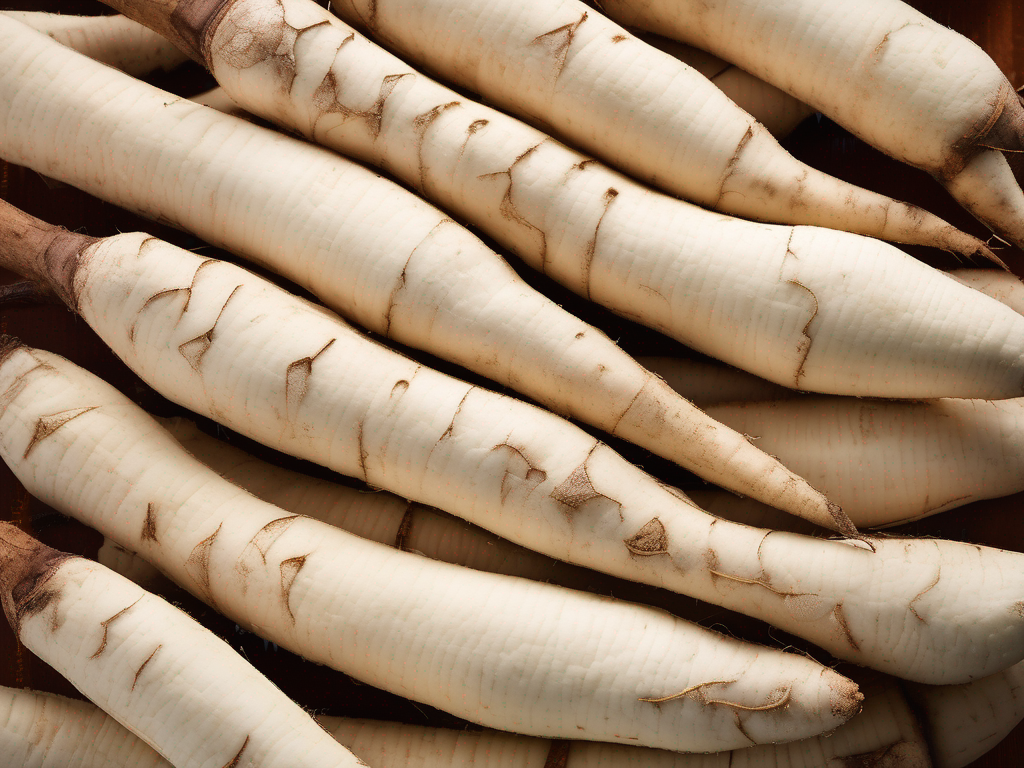
How to Prevent Mold Growth on Cassava Flour: Tips and Tricks
Get Your Free Food Safety Cheat Sheet
30 most common foods with instant answers. Print it and stick it on your fridge—completely free!
How to Prevent Mold Growth on Cassava Flour: Tips and Tricks
Cassava flour is a popular gluten-free alternative to traditional wheat flour, known for its versatility and nutritional benefits. However, like any food product, cassava flour is susceptible to mold growth if not stored properly. Mold not only affects the quality and taste of the flour but can also pose serious health risks if consumed. In this blog post, we will discuss effective ways to prevent mold growth on cassava flour, ensuring its freshness and safety for consumption. (Cassava)
Understanding Mold Growth on Cassava Flour
Before delving into prevention methods, it's crucial to understand why mold grows on cassava flour. Mold spores are omnipresent in the environment, and given the right conditions, they can thrive and multiply on food products. Cassava flour, in particular, provides an ideal environment for mold growth due to its high starch content and moisture retention properties. Factors that contribute to mold growth on cassava flour include:
- Moisture: Excess moisture in the storage environment or packaging can promote mold growth.
- Warmth: Mold thrives in warm temperatures, making it essential to store cassava flour in a cool, dry place.
- Air Exposure: Exposure to air can introduce mold spores to the flour, leading to contamination.
- Improper Packaging: Inadequate packaging or storage containers can fail to protect cassava flour from mold spores.
By addressing these factors, you can effectively prevent mold growth and extend the shelf life of your cassava flour.
Tips to Prevent Mold Growth on Cassava Flour
1. Proper Storage
- Store cassava flour in airtight containers or resealable bags to prevent air exposure.
- Keep the flour in a cool, dry place away from direct sunlight and moisture.
- Avoid storing cassava flour near sources of heat, such as ovens or stoves.
2. Optimal Humidity Levels
- Maintain humidity levels below 15% in the storage area to inhibit mold growth.
- Consider using desiccants or silica gel packets to absorb excess moisture.
3. Regular Inspection
- Check the cassava flour regularly for any signs of mold growth, such as discoloration or musty odor.
- Discard any flour that shows signs of mold contamination to prevent spread.
4. Quality Packaging
- Use food-grade, airtight containers or vacuum-sealed bags for storing cassava flour.
- Ensure the packaging is clean and dry before transferring the flour to prevent contamination.
5. Rotation and Consumption
- Practice first in, first out (FIFO) rotation to use older cassava flour before newer batches.
- Consume the flour within the recommended shelf life to minimize the risk of mold growth.
Safety Precautions and Considerations
- Allergen Awareness: Be mindful of cross-contamination risks if storing cassava flour alongside allergens.
- Labeling: Clearly label the storage containers with the date of purchase and expiry to track freshness.
- Temperature Control: Maintain a consistent temperature in the storage area to prevent fluctuations that can promote mold growth.
By following these tips and safety precautions, you can effectively prevent mold growth on cassava flour and ensure its quality and safety for consumption.
Conclusion
Preventing mold growth on cassava flour is essential for maintaining its freshness and nutritional value. By understanding the factors that contribute to mold growth and implementing proper storage practices, you can safeguard your cassava flour from contamination. Regular inspection, optimal humidity levels, quality packaging, and rotation strategies are key to preserving the quality of cassava flour. Remember to prioritize food safety and storage guidelines to enjoy the benefits of cassava flour in your culinary creations. Cassava flour can be a valuable addition to your pantry when stored correctly, free from mold and spoilage. (Cassava)
Related Posts
Here are some other articles you might find helpful:
Authoritative Food Safety References
These agencies and university labs inform every tip and health precaution we publish.
USDA FoodKeeper – Cold Storage Guidelines
Official refrigerator, freezer, and pantry timelines maintained by the U.S. Department of Agriculture.
Visit USDA FoodKeeperFDA Produce Safety Rule & Grower Guidance
Field-to-fridge handling practices that prevent contamination of fruits, vegetables, and leafy greens.
Visit FDA Produce SafetyCDC Foodborne Illness Prevention Hub
Surveillance-backed guidance on pathogens, symptoms, and steps to reduce foodborne illness risk.
Visit CDC Food SafetyUC Davis Postharvest Technology Center
University research detailing optimal storage atmospheres for produce after harvest.
Visit UC Davis PostharvestPenn State Extension – Home Food Preservation & Safety
Peer-reviewed extension bulletins on safe canning, chilling, and reheating practices.
Visit Penn State ExtensionGet Your Free Food Safety Cheat Sheet
30 most common foods with instant answers. Print it and stick it on your fridge—completely free! Want more? Upgrade to the complete guide with 70+ foods.
Scan your food directly and get instant safety info using our AI-powered camera feature.